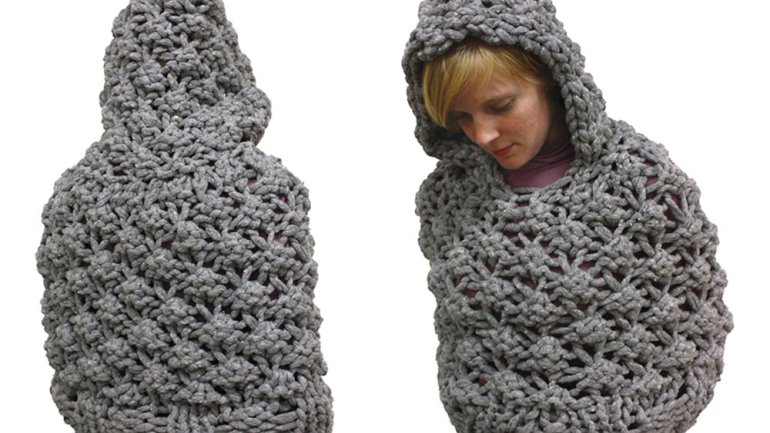Loose Knit, Close Ties
Loose Knit, Close Ties
Strong lines run through fiber artist Yulie Urano’s knitted works; they bend, interlock, root, structure, and stretch. They can nearly obscure the wearer or form a more subtle web on the body underneath.
Much the same can be said of the threads of heritage that course through every life. In the case of first-generation American families, those threads are, perhaps, more like ropes. Born in Kansas City, one of four daughters of Japanese-born parents, Yulie Urano is deeply entwined in two distinct cultures.
Her work is an exploration of her dual cultural identity, and she has spent much of her artistic energy seeking the best medium to do that work. When Urano took a required class at the Kansas City Art Institute in machine knitting, she hardly expected to discover it. She wasn’t interested in making machine-knit sweaters; “I said to myself, I’m not doing fashion, not doing clothes.”
Instead, she used the machine to knit yarn into more yarn. Big yarn. She wound the enormous, long tubes of fine-gauge machine-knit yarn into coils like rope. “You can’t buy yarn that thick,” she notes, nor can you find needles large enough to knit it. Out of necessity, Urano used her hands as needles, and knit the garments right onto her body.
The inherent elasticity of her knitted tube yarn lends a surprising degree of drape to the garments. The hollow structure also gives the yarn a lightness and pliability that would be impossible in conventionally spun yarn of similar diameter. Urano has also experimented with other knitting materials, such as the thick upholstery cording she uses to make her signature cowl-neck sweaters.
Fiber arts are in Urano’s blood; her grandmothers were kimono makers and indigo shibori dyers, and her mother sewed toys and clothes for Urano and her siblings. Yet while drawn to art from a young age and grateful to have had a supportive high school art department, Urano never intended to go to art school. She won a merit scholarship to the University of Colorado Boulder, where she started as a sociology major, then “at the very last second” changed to studio art.
Her parents were concerned. When she told them she was going to study art, “it was a struggle to convince them it was what I wanted to do. For me, it was most important to prove to my parents that I could do it.” She threw herself into her coursework and began to discover fiber arts. But the subject wasn’t a strength at Boulder. A ceramics teacher recommended the Kansas City Art Institute’s fiber arts program, where the 23-year old Urano completed her bachelor’s degree in 2011, the same year she won a $15,000 Windgate Fellowship Award from the Center for Craft, Creativity & Design for her knit/purl line of huge knits.
Urano doesn’t limit herself to knitwear. Living in Colorado apart from family inspired Homeboy, a series of stuffed, sewn, and felted wool creatures that combine Japanese kawaii (cute) qualities with the form of an English thatched cottage, creating a sort of home friend that can be carried anywhere.
Urano sees the interlocking structures in her knit work as a parallel to her entwined lineage; likewise, Homeboy gives the user a sense of the gift and the burden – the sheer complexity – of mediating between two cultures and their expectations.
Rachel Schalet Crabb is a writer and fiber artist in Minneapolis.

